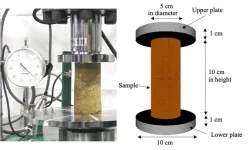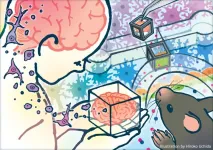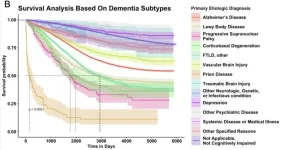A solid understanding of soil mechanics and behavior is one of the fundamental pillars of geotechnical engineering. The stability and resilience of many modern geotechnical structures, including building foundations, dams, bridges, and embankments, rely on appropriate modelling based on accurate measurements of soil properties.
Over the past few decades, unprecedented growth in computing power has turned numerical simulations of soil behavior into an attractive tool in geotechnical engineering. By representing soil as a set of interacting particles, numerical simulations can help researchers understand complex soil behavior under various conditions. Moreover, numerical simulations can help engineers in the design, analysis, and optimization of geotechnical structures, ensuring their long-term safety without disregarding cost-efficiency.
However, traditional methods for analyzing soil mechanics sometimes fail to replicate the complex nature of soil. This is especially true for soil in its rigid state, where particles are packed and interlocked, giving rise to characteristics typical of solid materials such as strength and stiffness. Thus, there’s a pressing need to improve numerical simulations of soil in its rigid state to complement our current understanding of soil in its fluid state.
In a recent study published in the Civil Engineering Journal, a team of researchers from Shibaura Institute of Technology, including Professor Shinya Inazumi, set out to address this challenge. Their work was published on Volume 10, Issue 1 of the journal in January, 2024 and made available online on February 10th of the same year.
The researchers focused on numerical simulations carried out using the moving particle semi-implicit (MSP) method, which models the fluid motion of a collection of interacting particles based on several physical principles. Their goal was to leverage the MSP method to accurately simulate unconfined compression tests on soil samples in a way that accurate reflects the dual nature of soil, which is described by the Bingham fluid biviscosity model. “Existing models struggle to accurately represent soil when it is in its rigid state, where traditional fluid mechanics principles did not adequately apply,” explains Prof. Inazumi.
To this end, the team progressively adjusted their numerical simulations, via trial-and-error, to precisely match the results of compression experiments conducted on undisturbed sand and clay samples. By delving into the intricacies of the simulation process, this approach highlighted the effects of parameters such as interparticle distance, initial time interval, and plastic viscosity on the accuracy and computational costs of the simulations.
Additionally, they also performed a comprehensive sensitivity analysis of simulation parameters influencing the Bingham fluid biviscosity model, such as yield strength and critical shear strain. “Previous studies often overlooked the interrelationship between different soil parameters and their collective effect on simulation accuracy,” comments Prof. Inazumi, “There was a clear need for a more holistic approach that could not only improve simulation accuracy, but also provide a robust framework for future study.”
The conclusions derived from these analyses will help establish reliable methodologies for simulating the behavior of different soil types. In turn, this will lead to new standards for simulation accuracy in the field of geotechnical engineering, which would have a direct impact on many real-world applications. “Higher simulation accuracy when predicting soil behavior under load means that engineers can design structures with a better understanding of soil conditions; this leads to not only enhanced safety, but also cost-effectiveness by minimizing over-engineering,” remarks Prof. Inazumi.
Worth noting, a better understanding of soil behavior acquired through simulations allows for the development of better prediction models for disaster prevention and risk mitigation. Such models are essential in earthquake- and landslide-prone areas, where proper design can greatly reduce the risk of catastrophic failure in geotechnical structures.
Additionally, this study could have notable implications in environmental engineering, land use management, and urban planning. “Accurate soil analysis is critical for determining the suitability of land for various purposes, be it residential, commercial, or agricultural use. By understanding the stress–strain characteristics of the soil with greater precision, planners and developers can make more informed decisions, thereby optimizing land use and reducing environmental impact,” muses Prof. Inazumi.
Let us hope future studies push soil simulations even further so that geotechnical engineering can break new limits!
***
Reference
DOI: https://doi.org/10.28991/CEJ-2024-010-01-01
About Shibaura Institute of Technology (SIT), Japan
Shibaura Institute of Technology (SIT) is a private university with campuses in Tokyo and Saitama. Since the establishment of its predecessor, Tokyo Higher School of Industry and Commerce, in 1927, it has maintained “learning through practice” as its philosophy in the education of engineers. SIT was the only private science and engineering university selected for the Top Global University Project sponsored by the Ministry of Education, Culture, Sports, Science and Technology and will receive support from the ministry for 10 years starting from the 2014 academic year. Its motto, “Nurturing engineers who learn from society and contribute to society,” reflects its mission of fostering scientists and engineers who can contribute to the sustainable growth of the world by exposing their over 8,000 students to culturally diverse environments, where they learn to cope, collaborate, and relate with fellow students from around the world.
Website: https://www.shibaura-it.ac.jp/en/
About Professor Shinya Inazumi from SIT, Japan
Shinya Inazumi obtained Master’s and PhD degrees in Engineering from Kyoto University in 2000 and 2003, respectively. He joined the Department of Civil Engineering at SIT in 2017, where he now serves as Full Professor. He specializes in geotechnical engineering, disaster prevention, soil analysis, and numerical simulations. He has published over 250 journal papers on these topics. He also received the ICE Publishing Awards 2020 (Environmental Geotechnics Prize) from the Institution of Civil Engineers in 2020 and the MEXT Young Scientists’ Prize from the Ministry of Education, Culture, Sports, Science and Technology in 2015.
END





